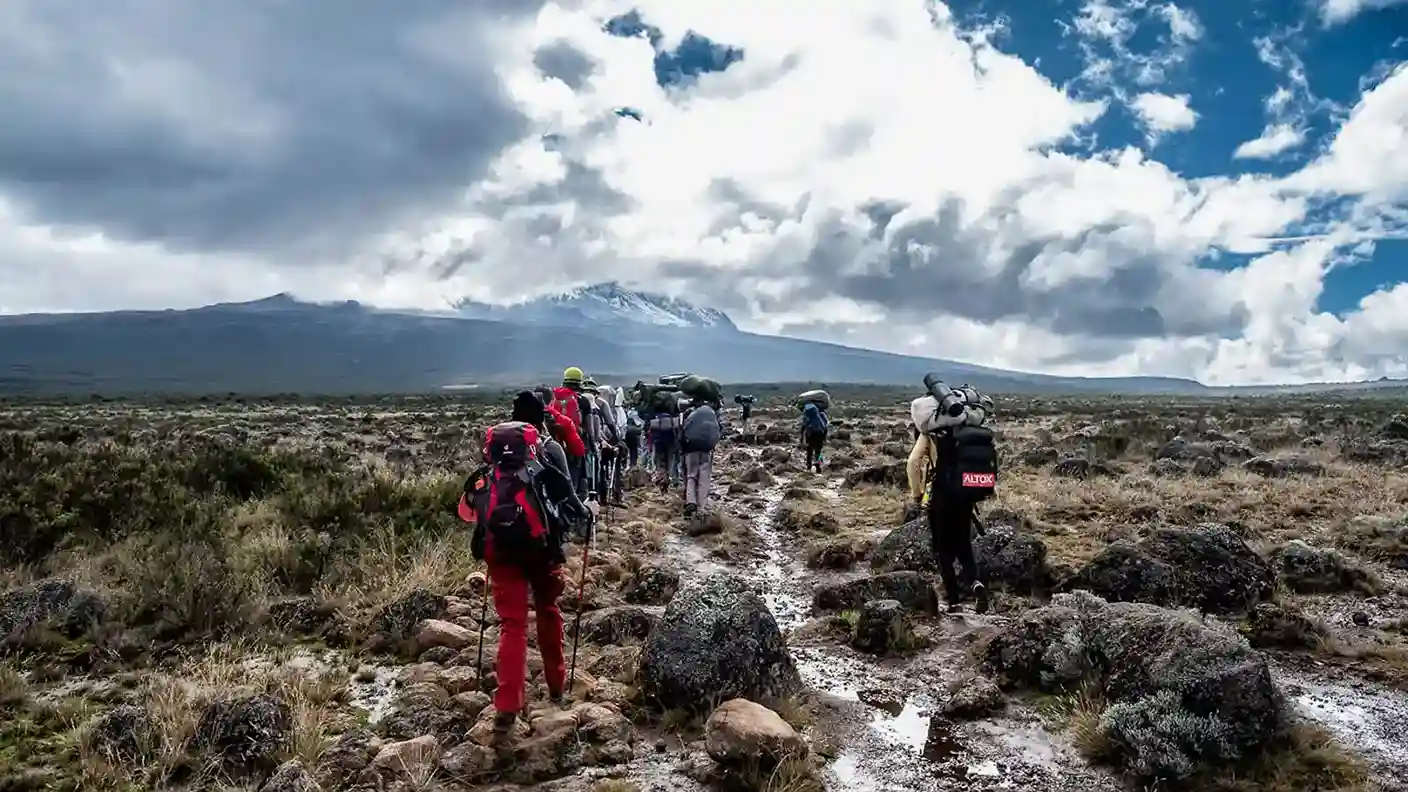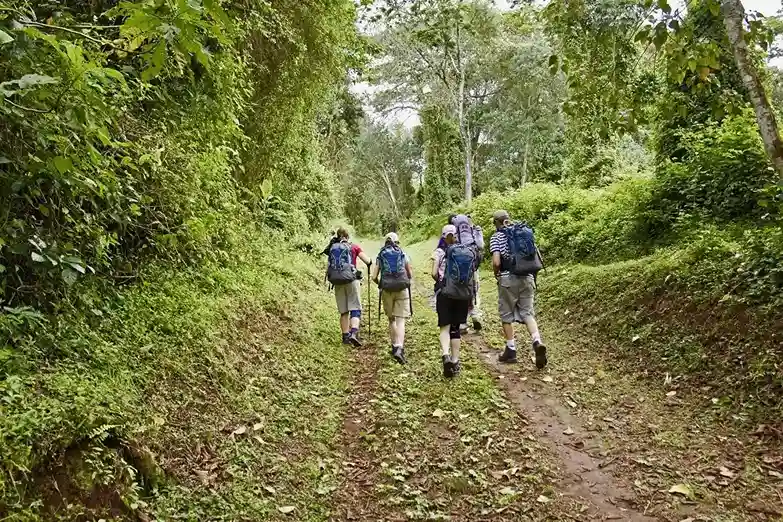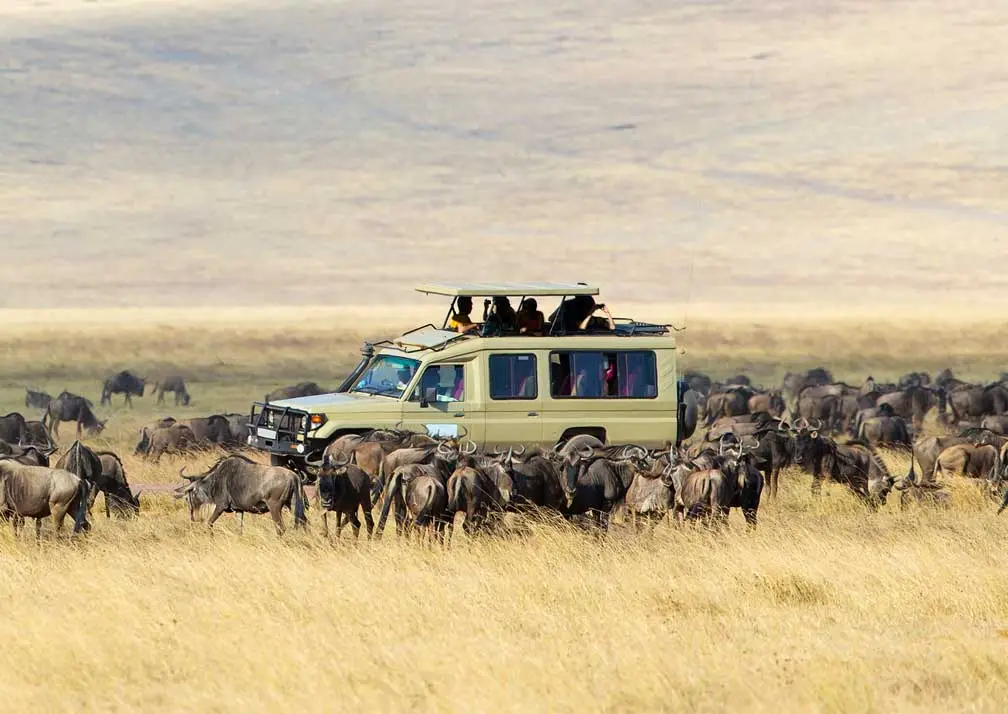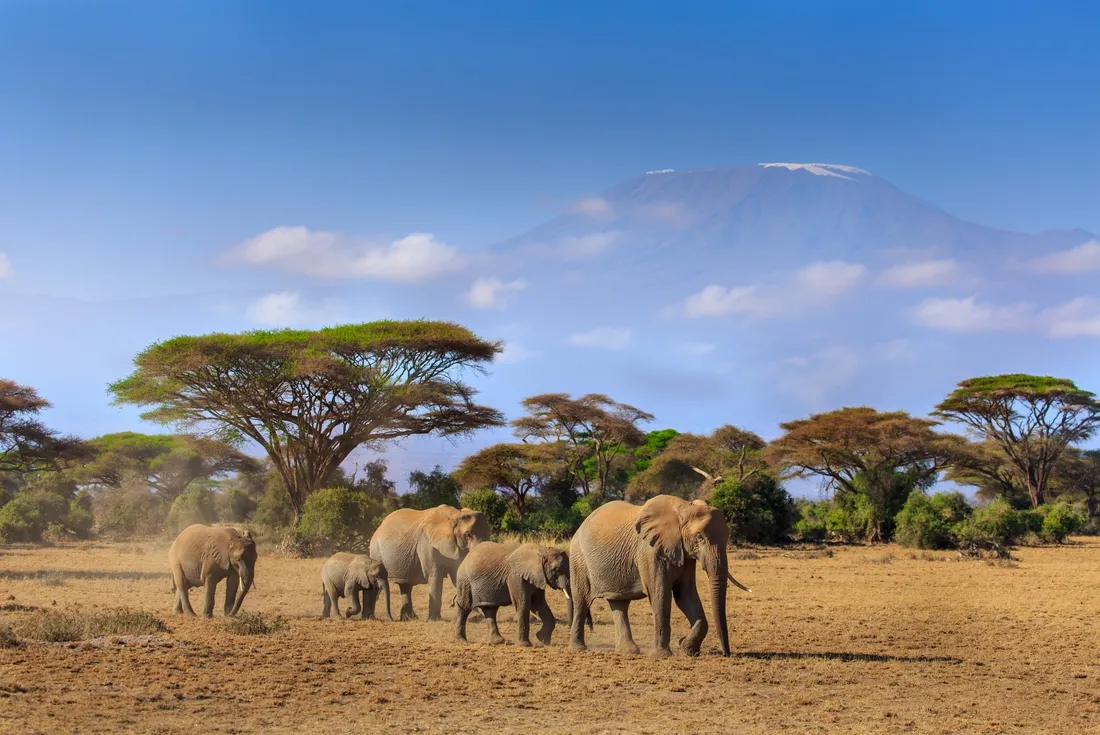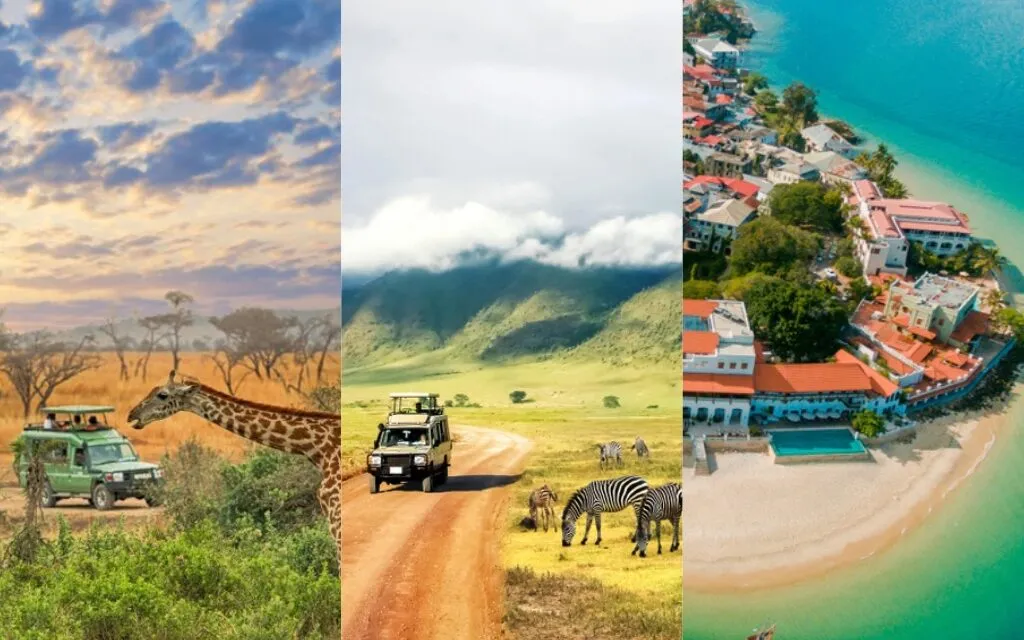Mount Kilimanjaro Climb via Lemosho Route – Scenic 7–8 Day Trek
Embark on an unforgettable Mount Kilimanjaro climb via the Lemosho Route with Capable Africa Tours. This scenic 7–8 day trek offers breathtaking views, diverse ecosystems, and a high summit success rate of 85–90%. With expert guides, small group treks, and carefully planned itineraries, our Kilimanjaro climbing packages ensure a safe and rewarding journey to Uhuru Peak. Explore lush rainforests, alpine deserts, and glacial summits while enjoying the Lemosho Route’s acclimatization advantage. Read on to discover the best Lemosho Route itinerary, what to pack, and why it’s one of the top Kilimanjaro climbing routes. Book your adventure today!
Book Your Trek NowLemosho Route Climb Highlights
- Duration: 7–8 Days, Optimized for Acclimatization
- Destination: Mount Kilimanjaro, Uhuru Peak (5,895m)
- Main Focus: Scenic views, wildlife, summit via Uhuru Peak
- Tour Style: Guided treks, small groups (2–12 people)
- Best Time: January–March, June–October for clear skies
- Ideal For: Adventure seekers, nature lovers, first-time climbers
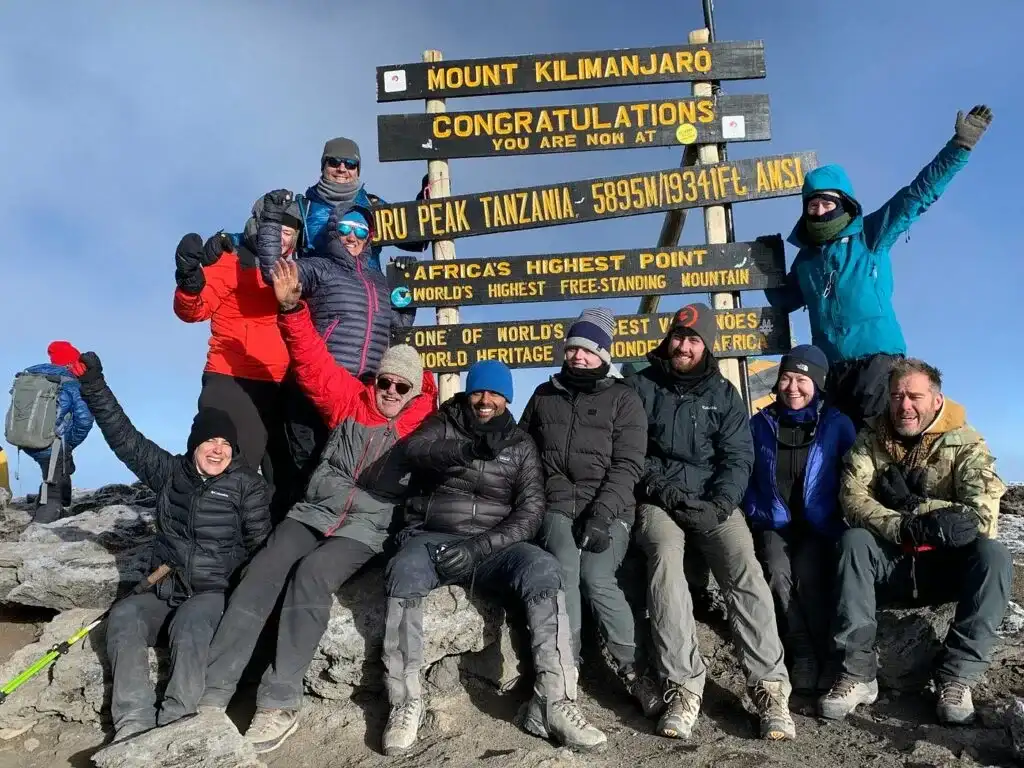
Introduction to the Lemosho Route on Kilimanjaro
The Lemosho Route is one of the best Kilimanjaro climbing routes, renowned for its scenic beauty and high summit success rate of 85–90%. Spanning 7–8 days, this route offers a gradual ascent through Kilimanjaro National Park, starting in lush rainforests and transitioning to moorlands, alpine deserts, and the iconic glacial summit at Uhuru Peak (5,895m). The Lemosho Route’s acclimatization advantage, due to its longer itinerary, makes it ideal for climbers seeking a safer, more comfortable trek. With fewer crowds than the Machame Route, Lemosho Route Kilimanjaro trekking offers an intimate connection with Tanzania’s natural wonders, including potential wildlife sightings like colobus monkeys and vibrant birdlife.
Capable Africa Tours provides expertly guided Kilimanjaro climbs via the Lemosho Route, complete with certified guides, porters, and sustainable practices. Our Kilimanjaro trek packages cater to adventurers of all levels, ensuring a memorable journey to Africa’s highest peak.
Why Choose the Lemosho Route for Your Kilimanjaro Climb
The Lemosho Route stands out among Kilimanjaro climbing routes for its scenic diversity and high success rate. Unlike the shorter Marangu Route, Lemosho’s extended itinerary allows for better acclimatization, reducing the risk of altitude sickness. The route’s remote starting point ensures fewer crowds, offering a tranquil Kilimanjaro trekking experience. Trekkers enjoy stunning views of the Shira Plateau, Lava Tower, and the iconic Barranco Wall, making it a favorite for photographers and nature enthusiasts. Compared to the Machame Route, Lemosho offers a quieter, more immersive journey with similar challenges but enhanced acclimatization benefits.
With Capable Africa Tours, your Lemosho Route hike includes expert guides, comfortable camping, and small group sizes for a personalized adventure. It’s the perfect choice for those seeking a balance of challenge, scenery, and summit success.
Lemosho Route Itinerary: Day-by-Day Elevation Profile
The Lemosho Route itinerary is designed to maximize acclimatization and scenic enjoyment. Below is a typical 8-day Lemosho Route elevation gain day by day:
- Day 1: Lemosho Gate (2,100m) to Mti Mkubwa Camp (2,650m) – 6km, rainforest trek.
- Day 2: Mti Mkubwa to Shira 1 Camp (3,500m) – 8km, moorland views.
- Day 3: Shira 1 to Shira 2 Camp (3,900m) – 7km, crossing Shira Plateau.
- Day 4: Shira 2 to Barranco Camp (3,950m) via Lava Tower (4,600m) – 10km, acclimatization day.
- Day 5: Barranco to Karanga Camp (4,000m) – 5km, tackling Barranco Wall.
- Day 6: Karanga to Barafu Camp (4,600m) – 4km, preparing for summit.
- Day 7: Barafu to Uhuru Peak (5,895m) and descent to Mweka Camp (3,100m) – 15km, summit day.
- Day 8: Mweka Camp to Mweka Gate (1,640m) – 10km, descent and transfer.
The 7-day itinerary combines Days 4 and 5 for a faster ascent, suitable for experienced trekkers.
What’s Included in Our Lemosho Route Climb Packages
Our Kilimanjaro trek packages via the Lemosho Route are all-inclusive, ensuring a seamless and safe climbing experience. Here’s what’s covered:
Inclusions
- Round-trip transfers from Kilimanjaro International Airport (JRO)
- Kilimanjaro National Park trekking permits
- Certified Kilimanjaro guides and porters
- Full-board meals during the trek
- High-quality camping gear (tents, sleeping mats)
- Daily health checks and emergency oxygen
- Bottled water and hot drinks on the trek
Exclusions
- International flights to Tanzania
- Travel or medical insurance
- Tips for guides and porters (~$15–20 pp/day, optional)
- Personal trekking gear (boots, clothing, sleeping bag)
- Optional pre/post-trek hotel stays
- Alcoholic beverages
Best Time to Climb Kilimanjaro via Lemosho Route
The best time to climb Kilimanjaro via the Lemosho Route is during the dry seasons: January–March and June–October. These months offer stable weather, clear views of Uhuru Peak, and safer trekking conditions. The dry seasons align perfectly with the Lemosho Route’s scenic views and wildlife spotting opportunities, such as colobus monkeys in the rainforest. The wet seasons (April–May, November) are less ideal due to rain and muddy trails, though they offer fewer crowds for a quieter Kilimanjaro trekking experience.
Lemosho Route Difficulty Level and Preparation Tips
The Lemosho Route difficulty level is moderate, suitable for fit beginners with proper preparation. The route’s gradual ascent and longer itinerary reduce the risk of altitude sickness, but the summit day is physically demanding, with a 1,295m ascent to Uhuru Peak. To prepare for your Kilimanjaro climb via Lemosho Route, follow these Kilimanjaro climbing tips for beginners:
- Physical Training: Train with cardio, hiking, and strength exercises 3–4 months prior.
- Altitude Acclimatization: Practice hikes at elevation if possible to adapt to high altitudes.
- Gear Familiarity: Break in your trekking boots and test your gear on practice hikes.
- Mental Preparation: Stay positive and pace yourself with the “pole pole” (slowly) approach.
Capable Africa Tours provides pre-trek briefings and daily health checks to ensure a safe climb.
Lemosho Route vs. Machame Route: Which is Better?
The Lemosho Route vs. Machame Route debate often comes down to personal preferences. Lemosho is longer (7–8 days vs. 6–7 days), offering better acclimatization and a higher success rate (85–90% vs. 80–85%). It’s less crowded, with a remote start through rainforests and stunning Shira Plateau views. Machame is more popular and slightly shorter, but its steeper ascent can be tougher for altitude adaptation. Both routes offer scenic beauty, but Lemosho’s quieter trails and wildlife sightings make it ideal for those seeking a more immersive Kilimanjaro trekking experience.
What to Pack for Your Kilimanjaro Trek
Packing for a Kilimanjaro climb via the Lemosho Route requires careful planning to handle diverse climates and high altitudes. Here’s a comprehensive packing list for your trek:
- Layered Clothing: Moisture-wicking base layers, fleece, and a waterproof jacket.
- Trekking Boots: Waterproof, broken-in boots with ankle support.
- Sleeping Bag: Rated for -15°C for cold summit nights.
- Trekking Poles: Adjustable poles for stability on uneven terrain.
- Headlamp: With extra batteries for the summit night climb.
- Sunscreen & Sunglasses: SPF 50+ and UV-protective glasses for high-altitude sun.
- Personal Medical Kit: Include altitude sickness medication (consult a doctor).
- Daypack: 20–30L for personal items, with porters carrying main gear.
Capable Africa Tours provides a detailed packing guide upon booking to ensure you’re fully prepared.
Camping on the Lemosho Route
Camping on the Lemosho Route offers an immersive experience in Kilimanjaro National Park. Our Kilimanjaro trek packages include high-quality tents, sleeping mats, and dining tents for comfort. Campsites like Shira 2, Barranco, and Barafu offer stunning views, from moorlands to glacial peaks. Porters set up and dismantle camps, allowing you to focus on trekking. Meals are prepared fresh daily, with vegetarian and dietary options available. Our sustainable Kilimanjaro climbing practices ensure minimal environmental impact, supporting local conservation efforts.
How Much Do Lemosho Route Climb Packages Cost?
Affordable Kilimanjaro climb packages via the Lemosho Route range from $2,500 to $4,500 per person, depending on duration, group size, and inclusions. Budget options offer shared camping, while luxury packages include private groups and premium services. Here’s a cost breakdown:
- Budget Climb: From $2,500 per person (group treks, shared camps).
- Mid-Range Climb: $3,000–$4,000 per person (smaller groups, enhanced comfort).
- Luxury Climb: From $4,000 per person (private treks, premium services).
Contact us now to customize your Kilimanjaro trekking itinerary!
Kilimanjaro Lemosho Route Gallery
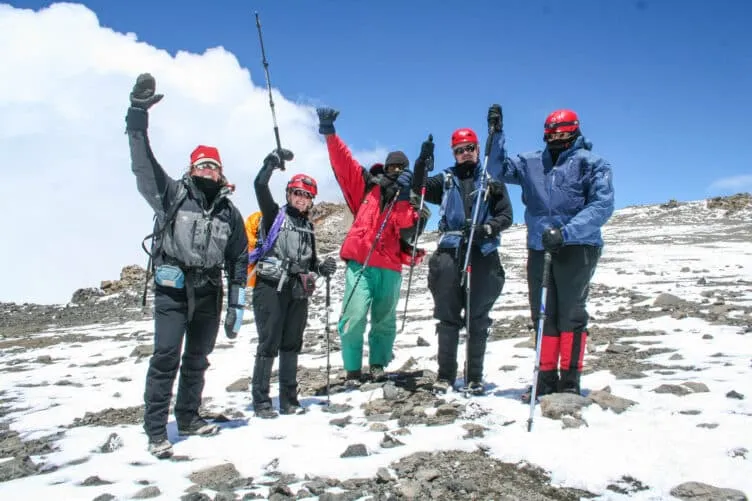
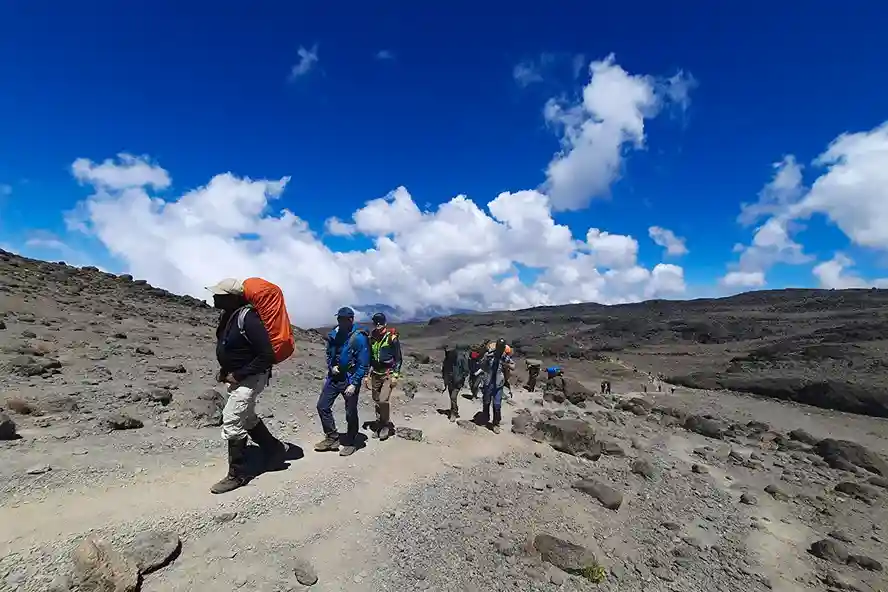
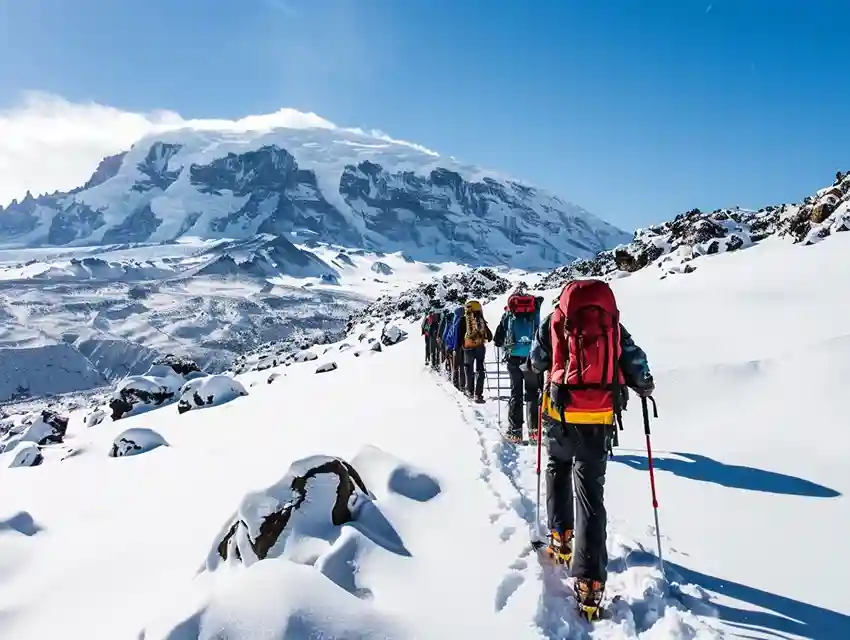
Experience the Lemosho Route Adventure
Watch the beauty of a Mount Kilimanjaro climb via the Lemosho Route, from lush rainforests to the glacial summit of Uhuru Peak.
Why Book Your Lemosho Route Climb with Capable Africa Tours
Capable Africa Tours is a trusted Kilimanjaro tour operator in Tanzania, offering safe and sustainable climbs. Our benefits include:
- 85–90% summit success rate with expert guides.
- Small group Kilimanjaro treks for personalized experiences.
- Certified guides and porters trained in high-altitude safety.
- Sustainable climbing practices supporting Kilimanjaro National Park.
- 24/7 support and seamless logistics from Kilimanjaro International Airport.
Choose us for a safe, scenic, and unforgettable Kilimanjaro climbing experience.
Ready for Your Kilimanjaro Lemosho Route Adventure?
Join Capable Africa Tours for a guided Mount Kilimanjaro climb via the Lemosho Route. Experience stunning landscapes, expert guidance, and a high chance of reaching Uhuru Peak. Customize your trek with add-ons like a Serengeti safari or Zanzibar getaway.
- High summit success rate of 85–90%
- Expert-guided treks with daily health monitoring
- Comfortable camping with eco-friendly practices
- Small groups for a personalized Kilimanjaro experience
- Supports local conservation and communities
Limited spots available for these exclusive Lemosho Route treks—book now to secure your adventure!
Book This Trek Now
